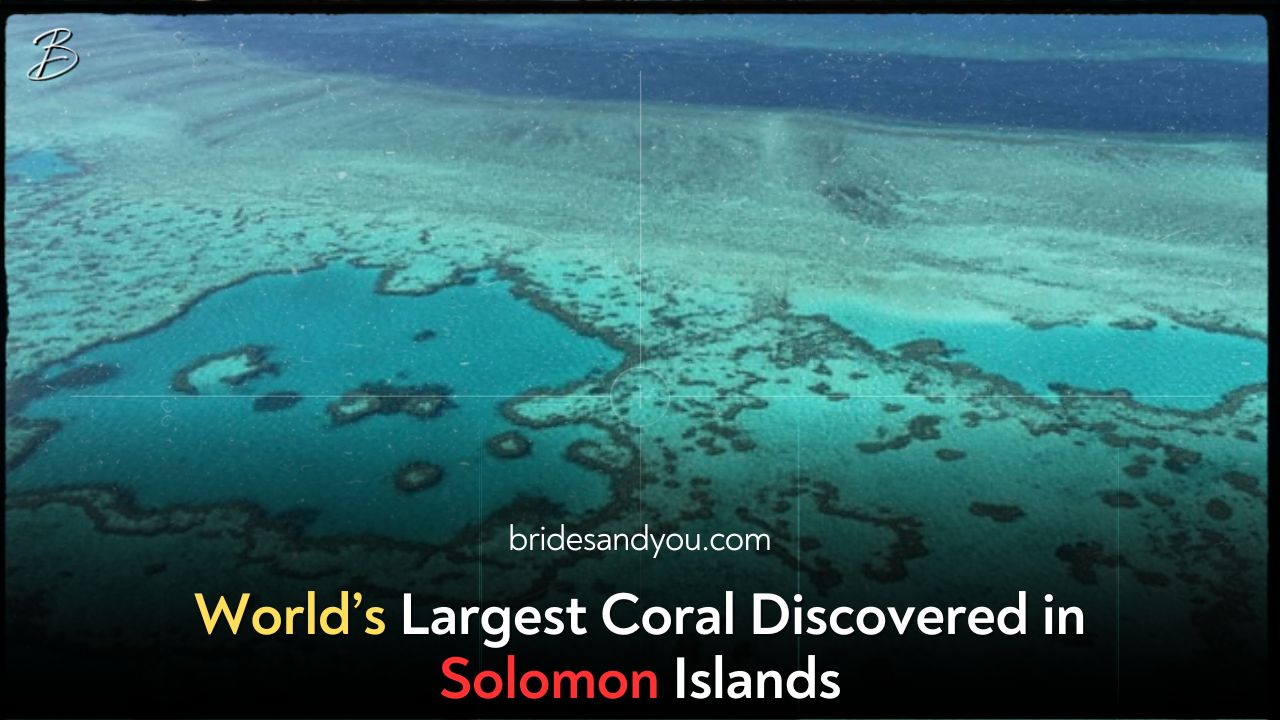Now Reading: Discovery of the World’s Largest Coral: A Monumental Step for Marine Conservation
-
01
Discovery of the World’s Largest Coral: A Monumental Step for Marine Conservation
Discovery of the World’s Largest Coral: A Monumental Step for Marine Conservation

In a groundbreaking discovery, a team of scientists has uncovered the world’s largest known coral, a vibrant and colossal Pavona clavus, in the waters off the Solomon Islands. This awe-inspiring organism, measuring 183 meters (600 feet) in circumference, can even be seen from space. Estimated to be between 300 and 500 years old, this discovery is a beacon of hope for marine conservation efforts amid the growing threats of climate change and pollution.
A Colossal Coral Wonder
The massive coral, located within the Pacific’s Coral Triangle, spans an incredible 34 meters in width, 32 meters in length, and rises over 5 meters in height. Unlike typical coral reefs formed by multiple colonies, this Pavona clavus is a standalone organism that began its life as a single larva, gradually multiplying over centuries into millions of genetically identical polyps.
Its colors are nothing short of mesmerizing, with shades of brown streaked with vibrant yellow, blue, and red. These striking hues contrast beautifully with the surrounding deep ocean waters, creating a vibrant underwater spectacle.
A Habitat of Life
The coral serves as an underwater metropolis, hosting a variety of marine life, including fish, shrimp, and crabs. Its intricate network of polyps provides shelter and nourishment to these species, making it a vital part of the local marine ecosystem.
National Geographic’s marine ecologist, Enric Sala, who led the expedition, likened the discovery to finding the “world’s tallest tree”. He emphasized its importance as both a scientific marvel and a critical reminder of the need for conservation:
“This massive coral is pulsing with life and color, but its existence is under threat from global warming and human activity.”
A Symbol of Resilience
The resilience of this solitary coral is a testament to nature’s adaptability. Despite its remote location, it faces threats from rising sea temperatures and ocean pollution. Yet, its survival offers critical insights into how corals might endure and adapt to environmental changes.
Eric Brown, a coral scientist on the team, hailed the discovery as a “healthy oasis” in a time when many shallow reefs are struggling to survive. The coral’s ability to thrive could provide clues to aid the repopulation of degraded coral reefs around the world.
A Call to Action
Local communities in the Solomon Islands have long depended on marine ecosystems for their livelihoods and culture. Ronnie Posala, a fisheries officer with the Solomon Islands Ministry of Fisheries, called the discovery “monumental” and stressed the importance of safeguarding the region’s marine life.
“Such discoveries remind us of our duty to protect these natural wonders for future generations,” Posala remarked.
The massive coral not only symbolizes hope but also serves as a reminder of the delicate balance of our planet’s ecosystems and the urgent need for conservation efforts.










